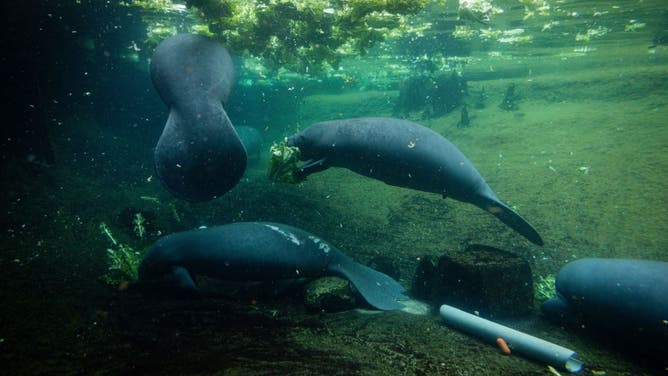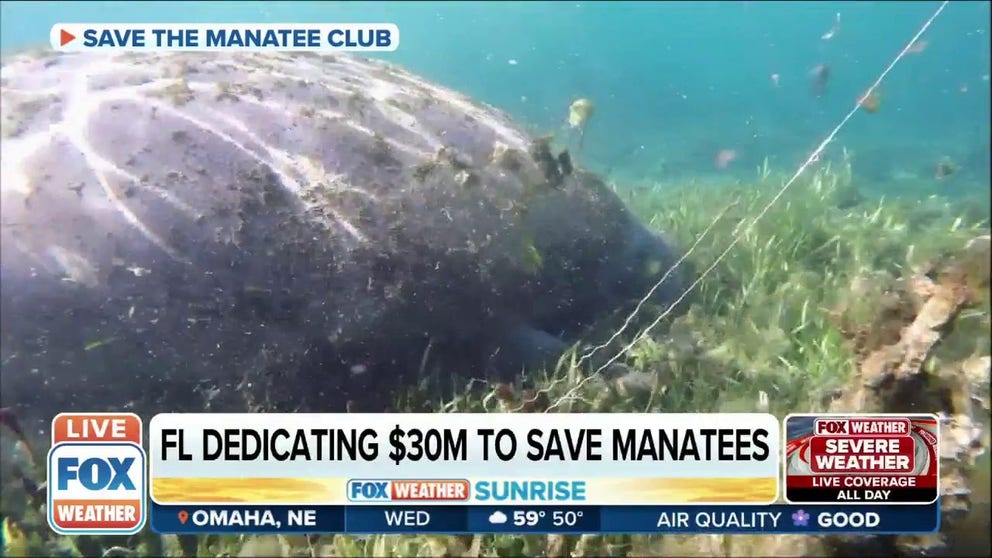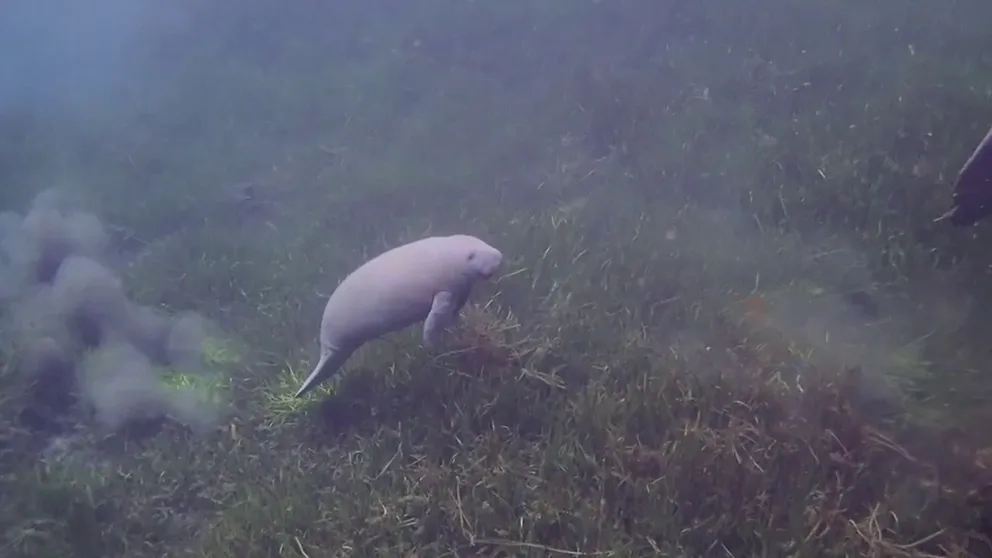Florida plans to relaunch manatee feeding program to fend off mortality event
A lack of seaweed leading to starvation has caused hundreds of manatee to die along Florida’s east coast.
Florida dedicating $30 million to save manatees
$30 million of Florida's budget will go towards saving manatees. The money will go to expanding the state's network of acute care facilities, supporting habitats and to supporting pilot programs.
Biologists will once again try a supplemental feeding program meant to stem the tide of manatee deaths in the warm waters of Central Florida after the disappearance of essential seagrass along the state's east coast.
During the winter of 2021-22, biologists distributed more than 200,000 pounds of leafy greens in the Indian River Lagoon, with the intent of doubling the amount during the upcoming winter.
The waterway is one of the few areas the giant sea cows congregate during the cold months due to water temperatures staying well above 70 degrees. Water temperatures drastically below the threshold can induce "cold stress" and make the warm-blooded animals vulnerable to disease and even death.
"We are going to continue the supplemental feeding trial at the Cape Canaveral-FPL power plant area. That's where we set up the seasonal no-entry zone, and it worked really well last year logistically," said Ron Mezich, a management leader at the Florida Fish and Wildlife Conservation Commission.
In 2021, agencies declared the threatened species were battling an Unusual Mortality Event that caused many of the year's 1,000 deaths.
"It is just a very significant event to the Atlantic Coast population that we are watching that closely. But at this time, it's not a threat to the existence of species," Mezich said.
So far in 2022, the FWC reported 734 manatees have been found dead, which is well below the record but above the long-term average.
ONLY IN FLORIDA: WATCH A MANATEE CHASE AN ALLIGATOR AT A FLORIDA PARK
Biologists blame a giant die-off of seagrass from pollution and algal blooms for causing animal starvation.
The massive mammals can consume nearly ten percent of their body weight per day, so if they go for an extended period without sufficient nutrients, human intervention could be lifesaving.
Dozens of manatees who are either underweight or injured are being cared for at rehabilitation centers across the country.
"Currently, we have 80 Florida manatees that are being cared for in rehabilitation facilities in Florida, Georgia, Ohio and Puerto Rico. Critical care space remains a concern. Eighty is a little bit lower than we have been, but it is still way higher than we were, say, five years ago," said Terri Calleson with the U.S. Fish and Wildlife Service.

Manatees feed in a recovery pool at the David A. Straz, Jr., Manatee Critical Care Center in ZooTampa at Lowry Park in Tampa, Florida, on January 19, 2021. - Red tides caused by human use of fertilizers, loss of food in their natural habitat and collision with boats are the main causes of manatee deaths. And in 2021, the numbers have skyrocketed. From January 1 to April 16, 674 manatees were found dead in Florida waters, according to the Florida Wildlife Service. That's nearly triple the manatee deaths recorded during the same period for each of the past five years.
(Photo by EVA MARIE UZCATEGUI/AFP via Getty Images / Getty Images)
SHARKS AND TARPONS AND MANATEES, OH MY!
Calleson said SeaWorld and ZooTampa are the only critical care facilities that aren't at maximum capacity and still are accepting rescued manatees.
The lack of vacancy concerns experts, especially if there is an unexpected jump in sick or injured animals over the next several weeks.
Calleson estimates that once the calendar enters deeper into winter, upwards of 2 dozen manatees could be released, which will help free up critical space.
Efforts to stem the tide by restoring ecosystems and making sure plenty of lettuce is available is a costly undertaking. More than $30 million has been earmarked for rescue and recovery and expanding the amount employees dedicated to efforts.
To donate to this season's feeding efforts, visit the Marine Mammal Fund.
Hurricane Ian triggers worries about manatees
The incredible amounts of rain and floodwaters generated by Hurricane Ian are causing algae blooms. Those blooms can kill off seagrass which manatees need to survive. Scientist worry about a die-off in the upcoming months.

